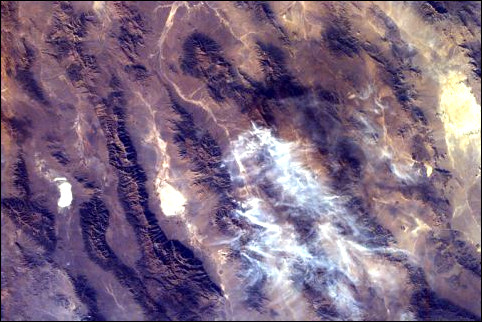

There are various ways to make mountains. Most of those familiar to us in the northern Chihuahuan Desert are a result of extensional forces. The region known as the Basin and Range Geologic Province has been stretched as much as 100% of its original width. The result? As the crust has thinned, blocks of rocks have tilted, leaving highlands separated by basins—and thus, of course, the name of the province. The opposite to extension also raises mountains, as shortening of a region causes a pile-up of layers of rock. The Sierra Madre Occidental on the western margin of our desert region is a combination of compression and volcanism. Volcanic activity is a widespread phenomenon in our area, producing highlands as magma erupts to the surface.
The Chihuahuan Desert is, in many ways, a product of its mountains and
those surrounding it. The desert climate itself, in part, is caused by the rain shadows
of the eastern and western sierra, while the vast array of plant and animal life is
possible only because of the desert's topographic diversity.

Listen to the Audio (mp3 format) as recorded by KTEP, Public Radio for the Southwest.
Contributor: Arthur H. Harris, Laboratory for Environmental Biology, Centennial Museum, University of Texas at El Paso.
Desert Diary is a joint production of the Centennial Museum and KTEP National Public Radio at the University of Texas at El Paso.

Basin and Range country as seen from space. A number of mountain ranges (the darker linear structures) are visible as are several light colored salt deposits left in the interiorly draining intermontane basins. The filmy, bluish-white structures are high clouds. Courtesy of the Image Science and Analysis Laboratory, NASA-Johnson Space Center. 2 Nov. 2004.